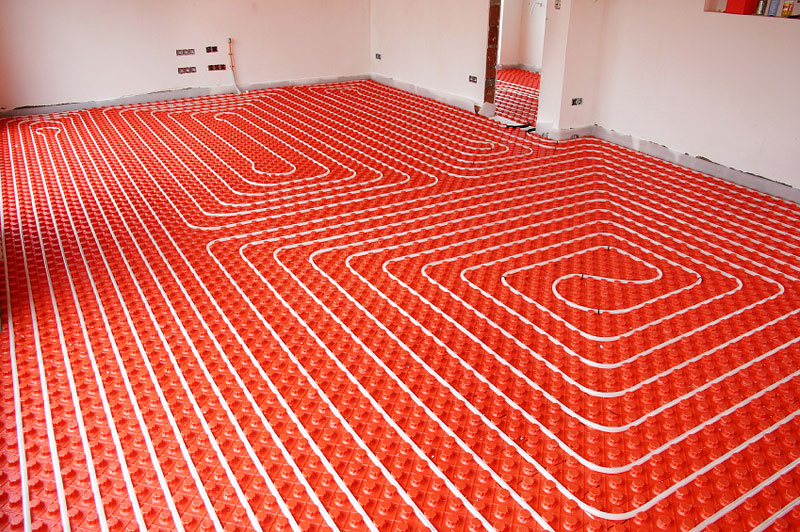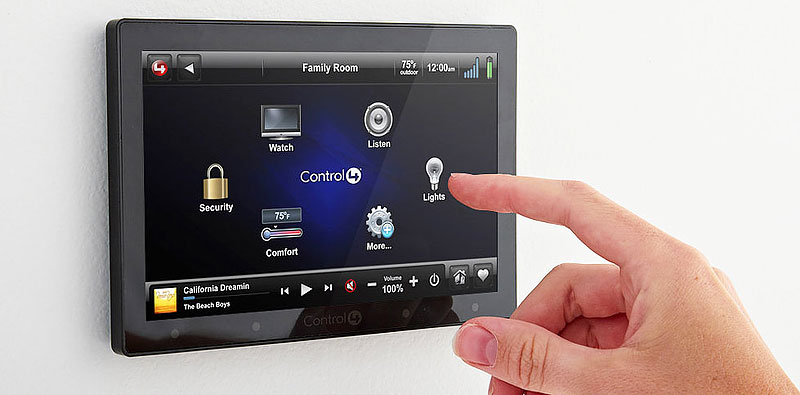
Digital advances have dramatically reshaped our daily lives, yet for the most part, today’s typical home isn’t very different from a home built 50 years ago. There may, however, be a significant shift on the horizon. As energy and environmental concerns drive a wave of innovation, a critical mass of homeowners are seeking to live better, at lower cost, in a healthy and ecologically sensitive way. In fact, many would argue that a sea change in home building has already begun.
After all, technologies already exist that are likely to redefine homes of the future. None of these smart – home technologies are ubiquitous yet, but if the march of history provides any indication, it may be only a matter of time before these cutting-edge features and components are as familiar as the household hallmarks we take for granted today.
1. Tankless Water Heaters

In a world of cheap, infinite resources, there would be no reason to revisit the conventional, tank-style water heater. But in reality, it’s inefficient and unnecessarily expensive to keep a large volume of water heated at all times—even during hours when household occupants are asleep or away.
Tankless water heaters offer a more sensible approach, operating strictly on demand and only when a fixture or appliance calls for hot water. As homeowners discover the energy- and money-saving performance of tankless units, many experts expect them to become the new standard.
2. LED Lighting

Shop for light bulbs at your local home center, and you’re likely to find a bevy of new choices. Of them all, LEDs are swiftly emerging as the favorite, not least because of their ultra efficiency. Compared to traditional incandescent light, LEDs consumes 75% less energy and lasts 25 times longer. Plus, even as prices plunge, LEDs continue to improve, with a burgeoning array of styles—bulbs, tapes, panels, pucks and more—offering an unprecedently high quality of light across the full spectrum, from crisp and cool to soft and warm. Is this the future of lighting? Many are sure of it.
3. Radiant-Heat Flooring

Decades ago, in the wake of World War II, forced air emerged as the most popular residential heating system in America. Even today, despite a range of performance drawbacks, forced air remains the dominant choice. But it’s definitely not the only the option out there, and in growing numbers, savvy homeowners are opting instead for radiant heat, for a range of reasons. For one, radiant heat eliminates the need for ductwork, notorious not only for hogging space and collecting dust, but also for leaking air and compromising system efficiency. As they don’t involve ducts, radiant systems operate at least 25 percent more efficiently, with some products—for instance, Warmboard—able to deliver even more dramatic monthly savings.
An even more compelling advantage: In stark contrast to the uncomfortably uneven heating that characterizes forced air, radiant systems deliver consistent, “everywhere” warmth. It’s a qualitatively different experience. Indeed, as you move about a room, or go from one room to the next, the temperature never varies. After a while—particularly because radiant heating systems operate invisibly and silently—you simply stop noticing that the heat’s on. You notice only that you’re perfectly comfortable. All signs indicate that radiant heating, which is already widespread in Europe and Asia, could be the next big thing in heating here at home.
4. Energy-Efficient Windows

Nowadays, windows are nearly as well insulated as walls, with single-paned designs having given way to double- or even triple-layer glazing. The extra panes add not only reinforcement, but insulating capacity as well. So too does the argon gas often injected between panes. Still another breakthrough: Metal oxide coatings, commonly known as low-emissivity, or low-e, coatings, work to block solar heat gain in summer, while preventing heat from escaping in winter. Homeowners reap the benefits of these advances, taking their pick of new-generation windows that offer both stellar looks and superior performance.
5. PV Solar Panels

Solar-powered homes are no longer a pipe dream. Of all the alternative energy options available today, none are more popular than photovoltaic panels, which capture sunlight and convert its energy into household electricity. Recent years have seen an explosion in solar adoption, not least because manufacturing advancements and government incentives have brought down the upfront installation cost, bringing it firmly within an affordable range. If solar panels are not already a common sight on the roofs of homes in your area, just wait. It’s really only a matter of time.
6. Smart – Home Technologies

Digital technology has truly reshaped our lives. Remember, it wasn’t so long ago that websites and smartphones didn’t even exist! Will the near future bring as much change as we’ve seen in the past 20 years? Where do we go from here? Many believe that the Internet of Things represents the next frontier—and it’s a frontier that seems closer every day. Now that everything from light bulbs to thermostats are connected to the Web, we can remotely control and, in many cases, automate a host of household functions. So much of the future remains a mystery, but where smart homes are concerned, it’s safe to assume that we’ve seen only the beginning.





Leave a Reply